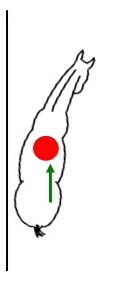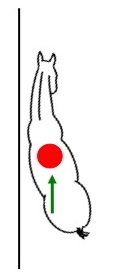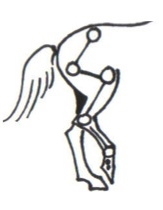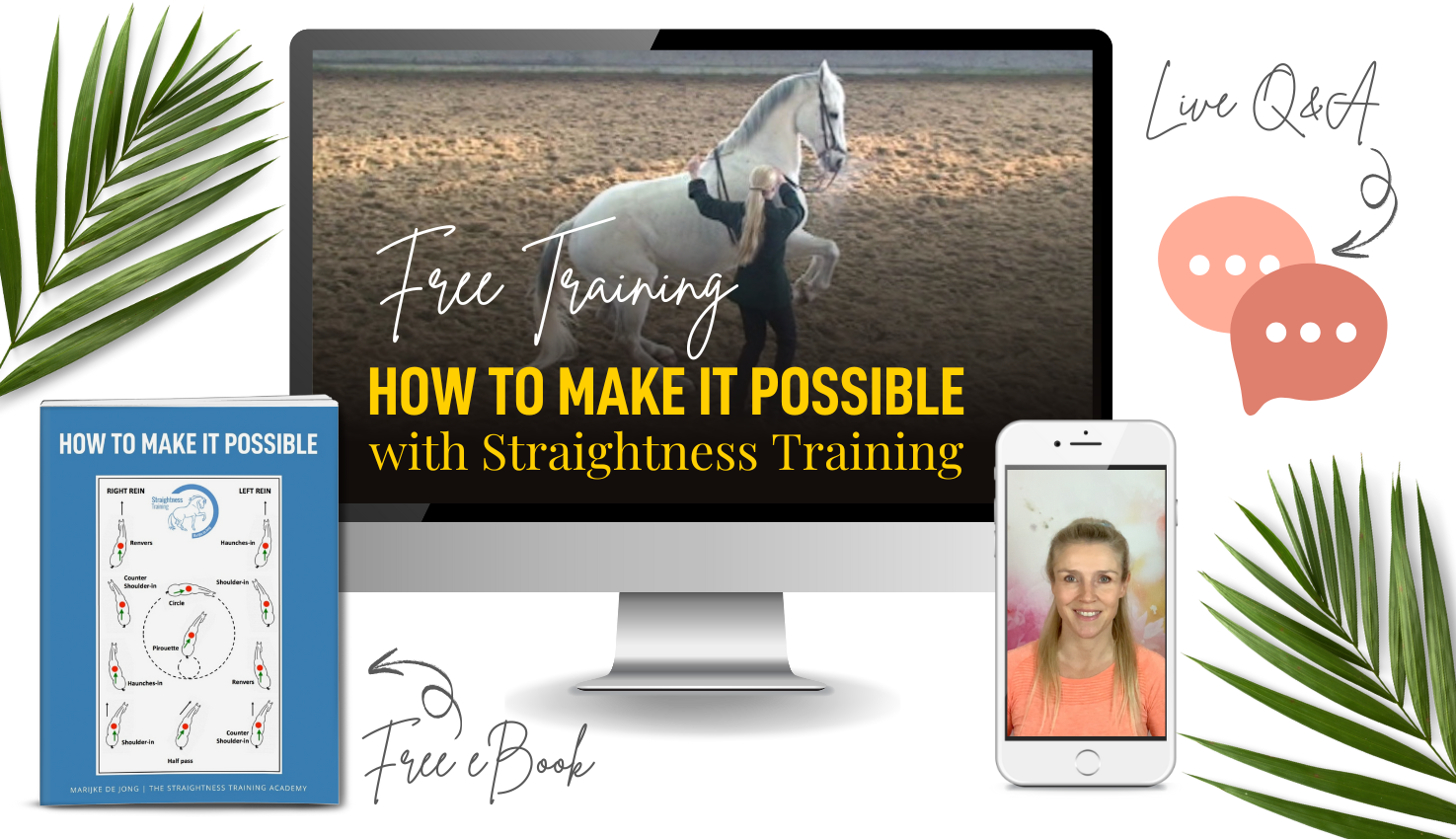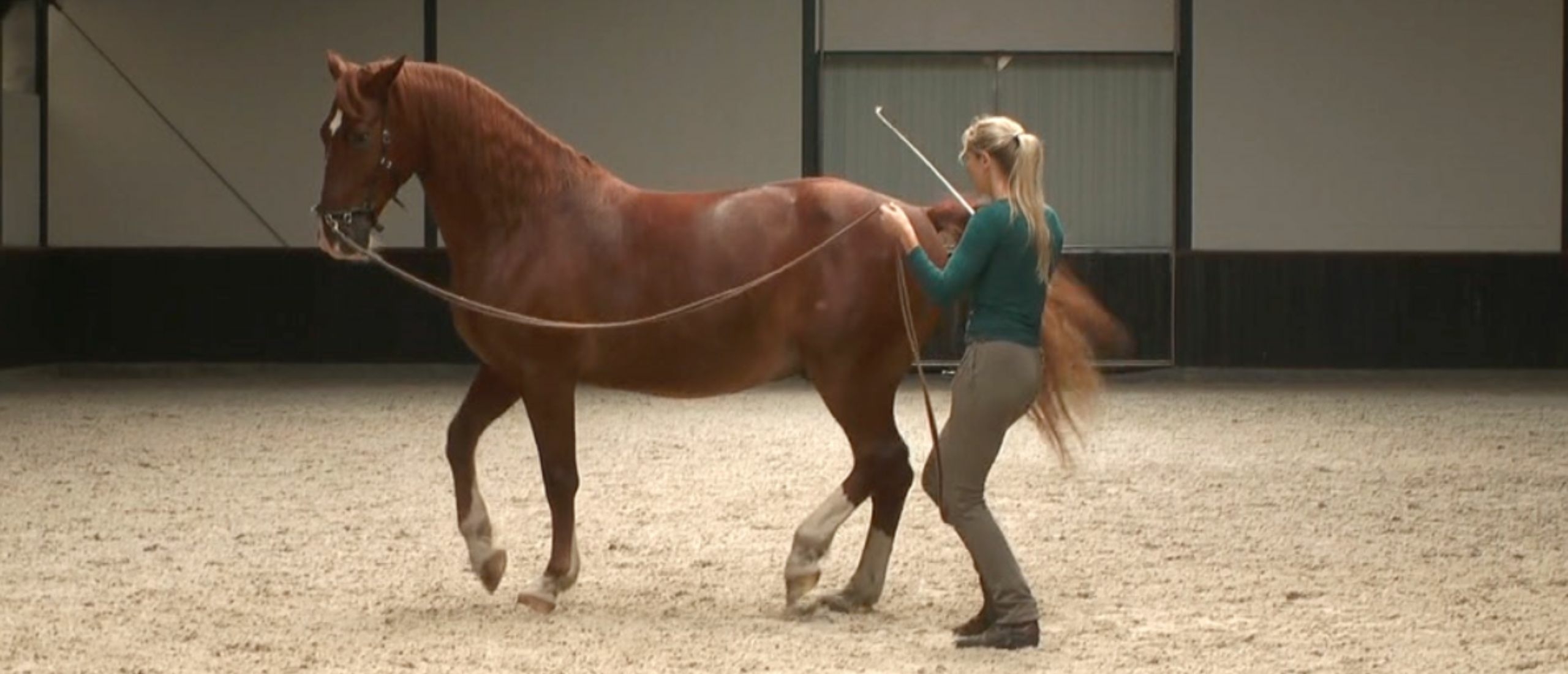
Piaffe
Piaffe arises by collecting in trot. Piaffe is like a trot in place without suspension phase, and with only one hoof print forward in every step. The horse is bending in its haunches, the hind legs step under the point weight and the horse’s surface support becomes smaller. The pelvis is tilted, the back arches and the horse lifts its front.
Trot range
Trot has two extremes: collection and extension. The highest collection is found in piaffe, the biggest extension is found in extended trot.
The extended trot is the trot with the longest strides. The more the rider goes towards piaffe, the more active, shorter and higher the steps.

Piaffe
Half steps
Trot in collection
Trot
Middle trot
Extended trot
Goal
The goal of straightness training is to develop the riding balance of a horse. Piaffe shifts the point of mass from the front legs to the hind legs. Therefore the shoulders become more free.
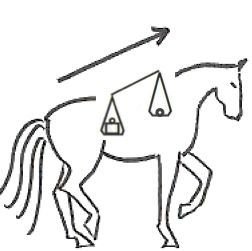
Bending body & limbs
To collect a horse in piaffe he has to be able to bend his body and his limbs:
| Step 1: Bending the body On the circle the horse has learned to bend its body from head to tail. |
| Step 2: Bending inside hind leg By using shoulder-in, the inside hind leg steps under the point of weight and gets more weight to carry. Because of the extra weight, it has to bend more. |
| Step 3: Bending outside hind leg With the exercise haunches-in and it’s derivatives, the horse has learned to make his outside hind leg step under the point of weight, to bend and to carry. |
| Step 4: Bending both hind legs Finally piaffe makes both hind legs carry and bend. |
Teaching the exercise to the horse

In straightness training, the piaffe is usually first taught to the horse in hand, starting with half-steps.
You can achieve these “half steps” by collecting the horse more and more in trot. By halving these steps, the piaffe is then created.
When the horse shows a few proper steps during the first attempt, stop ad reward the horse extensively.
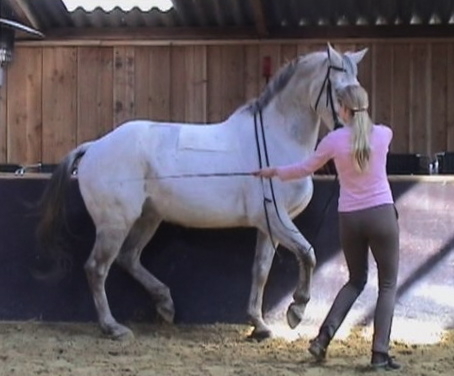
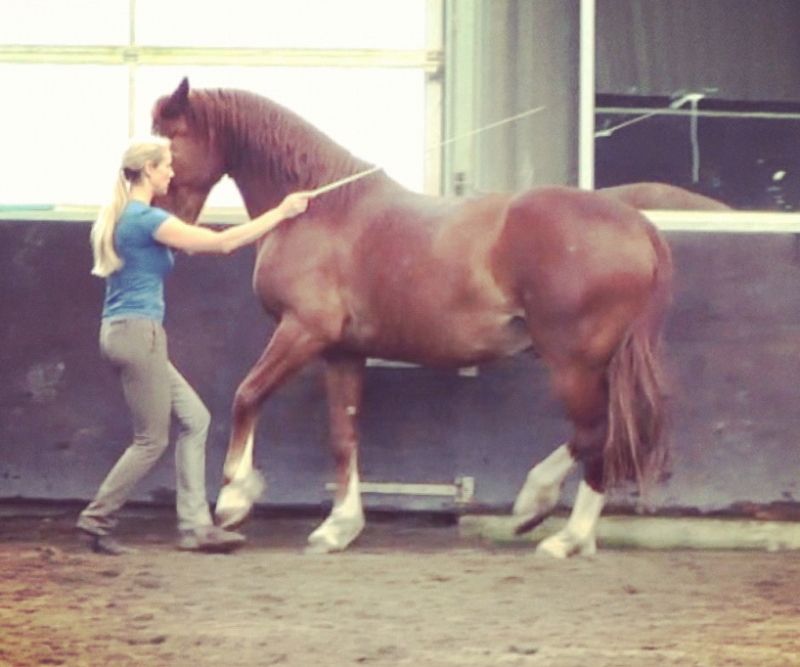
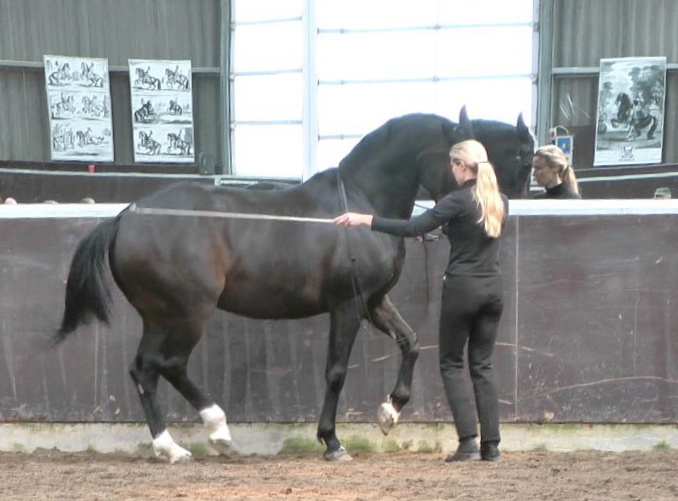
After this, the piaffe can be developed under the rider. The rider collects the horse in trot and when the rider feels that the horse has reached its limits, the rider should ride forward again.
It will take some years before the horse is capable of perfect piaffe movements, but the way towards it already makes the horse stronger, more supple and better maneuverable.
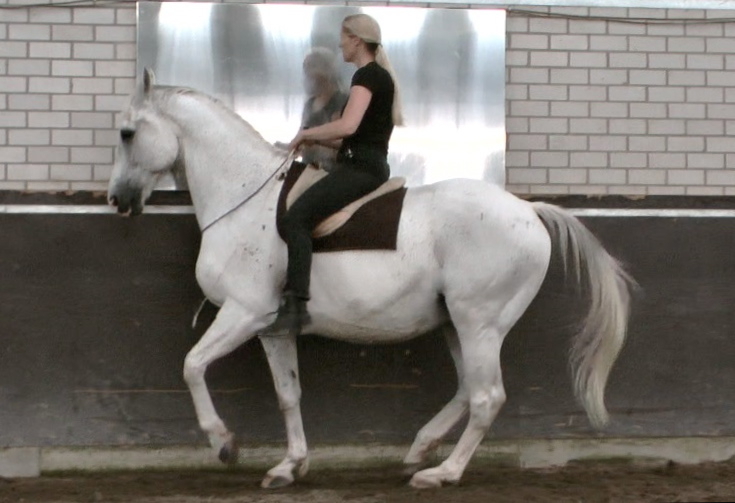
Variations
- In straightness training, piaffe is often done with a bending to the inside. The piaffe is right bended on the right lead, and left bended when going to the left. The straight piaffe is done on the center line.
- Shoulder-in and hindquarter-in in piaffe improve the bending in both hind legs separately.
- Transitions in tempo are valuable gymnastics.
- Transitions to- and from walk, trot and canter in piaffe improve all gaits. The piaffe makes the horse more bended in its hindquarter and provides more carrying in the gaits. And the gaits improve the piaffe:
– Walks brings calmness into the piaffe.
– Trot improves the correct placement of the diagonal legs into the piaffe.
– Canter brings more uphill into the piaffe.
- The piaffe-pirouette is an exercise the horse can start to do when it can produce a long series of equal steps in piaffe.
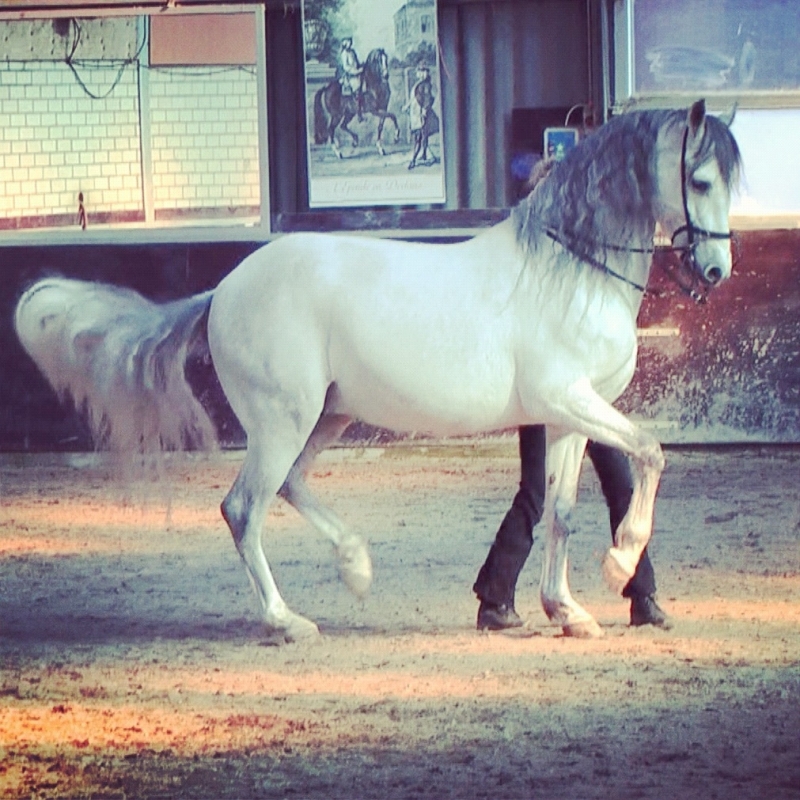
- Work between pillars is another alternative in the art of riding to develop the piaffe.
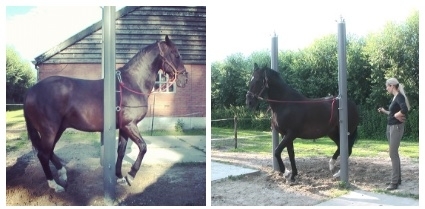
- The piaffe can also be performed at liberty.
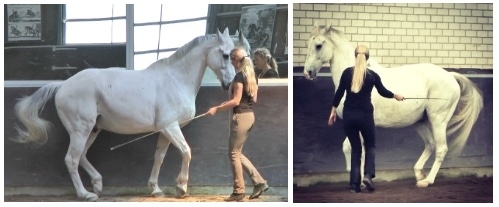
- If the horse let’s itself collect more and more, the weight will be even more shifted to the hind quarters, therefore the horse might lift one front leg
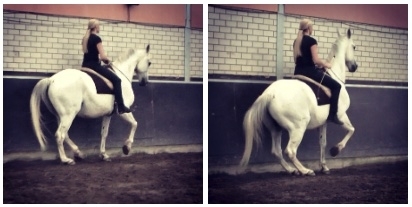
Links to Related and Recommended Articles
- Tölt at he same level as piaffe? »
- Connection & Collection »
- What does the position of the ears mean?
- What does the swishing of the tail mean?


